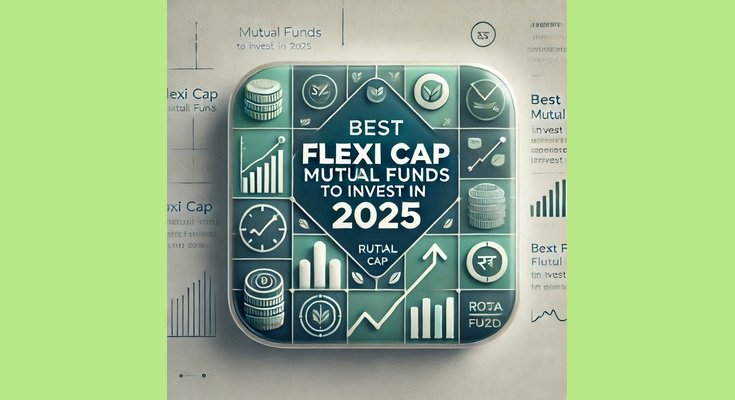Best Flexi Cap Mutual Funds to Invest in 2025

Mutual funds have become a go-to investment choice for millions of Indians due to their ability to diversify portfolios and maximize returns. Among the wide array of options available, Flexi Cap Mutual Funds stand out for their flexibility to invest across market capitalizations, offering both stability and growth.
If you’re looking to make informed investment decisions in 2025, this comprehensive guide will help you understand Flexi Cap funds and explore the best options available in the Indian market. For more insights on personal finance and investing, visit RichPath.in, your trusted guide to financial freedom.
What Are Flexi Cap Mutual Funds?
Flexi Cap Mutual Funds are equity-oriented mutual funds that invest in stocks of companies across large-cap, mid-cap, and small-cap categories. This flexibility allows fund managers to adjust the portfolio based on market conditions, ensuring an optimal balance between risk and return.
Key Features of Flexi Cap mutual Funds:
- Diversification: Exposure to multiple sectors and market caps.
- Dynamic Allocation: Fund managers can shift focus between large, mid, and small-cap stocks depending on market trends.
- Risk-Adjusted Returns: Offers a mix of stability from large caps and growth potential from mid and small caps.
- Long-Term Growth: Ideal for investors with a long-term horizon.
Why Invest in Flexi Cap Funds in 2025?
1. Economic Recovery Post-Pandemic
With India’s economy showing strong signs of recovery, investing in Flexi Cap funds in 2025 allows you to capture growth across sectors.
2. Market Volatility Management
Flexi Cap funds can adapt to market volatility by reallocating assets across market caps, offering a relatively stable investment option.
3. Opportunities in Small and Mid Caps
Smaller companies are expected to thrive in 2025 due to government reforms and technological advancements, and Flexi Cap funds provide exposure to these opportunities.
Top Flexi Cap Mutual Funds to Consider in 2025
Here’s a list of the best-performing Flexi Cap mutual funds for Indian investors, along with their features and performance metrics:
1. Parag Parikh Flexi Cap Fund
- Fund Type: Open-ended
- Expense Ratio: ~0.80% (Direct Plan)
- 5-Year CAGR: ~21%
- Investment Focus: Invests in Indian and international equities.
- Why Choose It: Strong focus on undervalued companies with long-term growth potential.
- Read more about this fund
Example: An investment of ₹1 lakh in 2018 has grown to approximately ₹2.6 lakh in 2023.
2. HDFC Flexi Cap Fund
- Fund Type: Open-ended
- Expense Ratio: ~1.0% (Direct Plan)
- 5-Year CAGR: ~18%
- Investment Focus: Diversified portfolio with a slight bias toward large-cap stocks.
- Why Choose It: Stability from large-cap exposure combined with consistent returns.
Example: Ramesh, a risk-averse investor, used HDFC Flexi Cap Fund to grow his retirement corpus over 10 years.
Read More – Full Analysis of HDFC Flexi Cap Fund
3. SBI Flexi Cap Fund
- Fund Type: Open-ended
- Expense Ratio: ~0.85% (Direct Plan)
- 5-Year CAGR: ~17%
- Investment Focus: Balanced allocation across large, mid, and small caps.
- Why Choose It: Excellent track record of weathering market downturns.
Example: Sunita invested ₹50,000 annually for 5 years and saw her portfolio grow steadily despite market volatility.
4. ICICI Prudential Flexi Cap Fund
- Fund Type: Open-ended
- Expense Ratio: ~1.1% (Direct Plan)
- 5-Year CAGR: ~19%
- Investment Focus: Active management of sectoral allocation.
- Why Choose It: Suitable for investors seeking high growth potential.
Example: The fund outperformed its peers in 2023, making it a top choice for aggressive investors.
5. Kotak Flexi Cap Fund
- Fund Type: Open-ended
- Expense Ratio: ~0.90% (Direct Plan)
- 5-Year CAGR: ~16.5%
- Investment Focus: Conservative approach with a focus on large caps.
- Why Choose It: Ideal for conservative investors seeking stable returns.
Example: An NRI invested in Kotak Flexi Cap Fund for steady returns in INR, benefiting from rupee appreciation.
How to Choose the Right Flexi Cap Mutual Fund
Selecting the best Flexi Cap mutual fund requires evaluating the following factors:
1. Investment Objective
Identify your financial goals. Are you aiming for wealth creation, retirement planning, or funding a child’s education?
2. Risk Appetite
Understand your comfort with market volatility. If you prefer lower risk, choose funds with a larger allocation to large-cap stocks.
3. Performance Track Record
Analyze the fund’s historical returns over 3, 5, and 10 years to ensure consistent performance.
4. Expense Ratio
Lower expense ratios can significantly impact your returns over time.
5. Fund Manager Expertise
A skilled fund manager can make a substantial difference in how the fund performs during market cycles.
Benefits of Investing in Flexi Cap Funds
- Flexibility: Adapts to changing market conditions.
- Diversification: Spreads risk across sectors and market caps.
- Professional Management: Managed by experienced fund managers.
- Liquidity: Easy to redeem your investment anytime.
- Tax Efficiency: Long-term capital gains (LTCG) tax of 10% on returns above ₹1 lakh.
SIP vs. Lump Sum: What’s Better?
SIP (Systematic Investment Plan):
- Ideal for: Regular investors with limited funds.
- Benefit: Reduces market timing risks through rupee cost averaging.
- Example: Investing ₹5,000 monthly in a SIP over 10 years can build a significant corpus.
Lump Sum Investment:
- Ideal for: Investors with a large surplus.
- Benefit: Best during market downturns for maximum gains.
- Example: A one-time investment of ₹1 lakh during a market dip can yield high returns over 5 years.
Mistakes to Avoid When Investing in Flexi Cap mutual Funds
- Chasing Past Performance: Focus on consistent performers rather than funds that delivered exceptional returns only recently.
- Ignoring Expense Ratios: Higher expense ratios can erode returns.
- Short-Term Focus: Flexi Cap funds are best for long-term goals.
- Overlooking Diversification: Avoid investing heavily in similar types of funds.
Conclusion for best flexi cap mutual fund
Flexi Cap Mutual Funds offer a versatile investment option that balances risk and return effectively. Whether you’re a beginner or an experienced investor, these funds can cater to your financial needs in 2025 and beyond.
For personalized advice and expert insights on mutual fund investing, visit Rich Path.—your partner in building a wealthier future.
Did you find this article helpful? Like, share, and leave a comment below to share your thoughts or suggest topics you’d like us to cover. Let’s grow together!
Disclaimer:
The information provided in this article is for educational and informational purposes only and should not be considered as financial or investment advice. Mutual fund investments are subject to market risks, and past performance is not indicative of future results. Readers are advised to consult with a certified financial advisor or conduct their own research before making any investment decisions. The examples provided are for illustrative purposes and may not reflect actual returns or outcomes. Tax laws and regulations are subject to change and may vary based on individual circumstances. The author and publisher are not responsible for any financial losses or legal implications arising from the use of this information.











10 COMMENTS